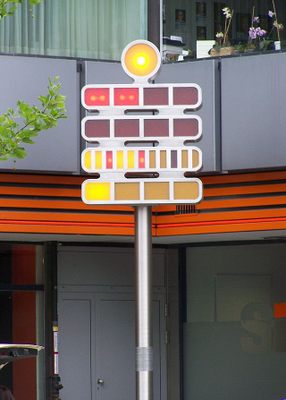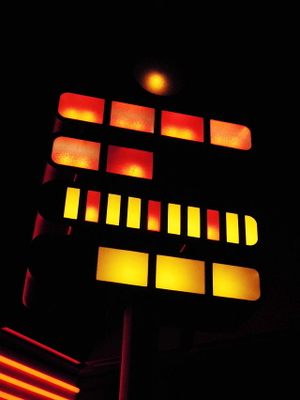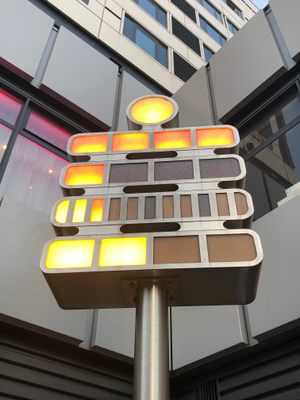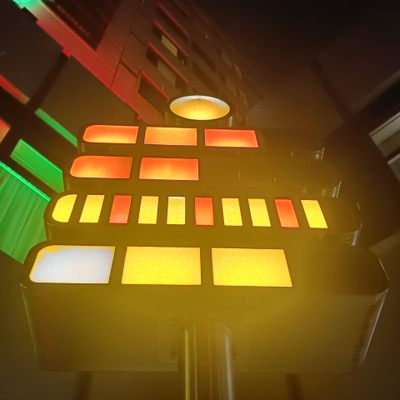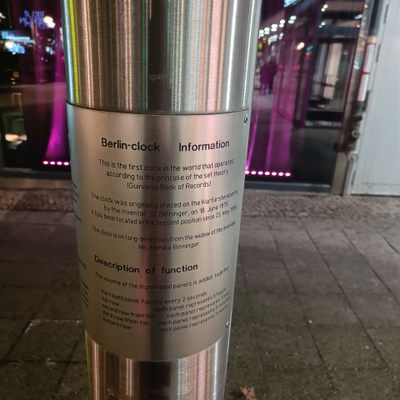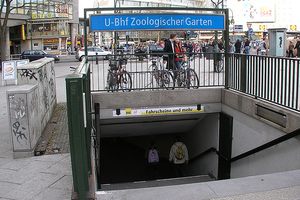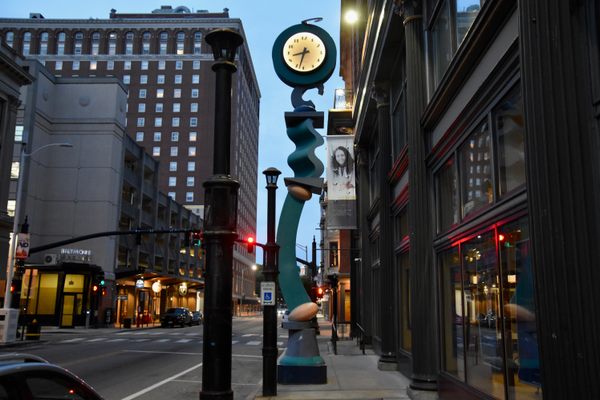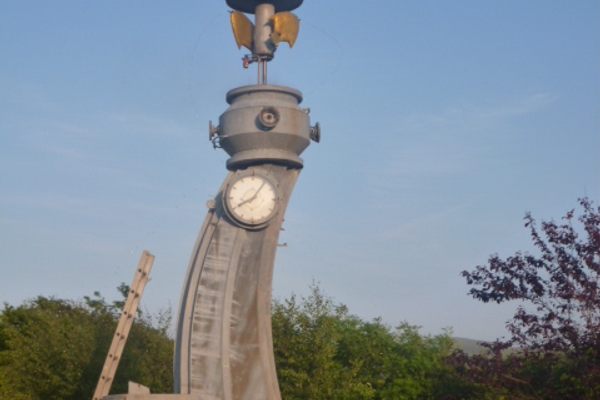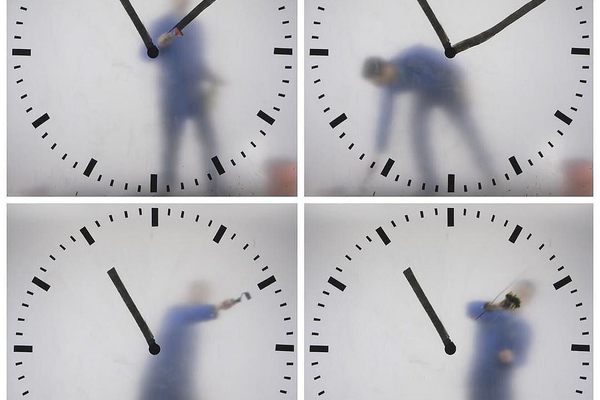About
The relentless predator that is time can be measured in an almost infinite variety of ways, from binary code to grains of sand to numbers and letters, but Germany's Mengenlehreuhr claims to be the first timepiece that measures our slow journey through this life in nothing more than colors, light, and set theory.
Designed like a retro-futuristic conversation piece, the clock was first installed in Berlin in 1975, commissioned by the Berlin senate and designed by inventor Dieter Binninger. The retro-futuristic timepiece consists of 24 lights that blink on and off in patterns that measure a 24-hour cycle for those who can decipher the code. Some of the lights represent five hour units, while others represent one hour units, and still others denote minutes and seconds. If added correctly, one can decipher the time.
The "Berlin Clock" quickly became a popular landmark and soon small desktop versions of the strange timepiece began being sold in department stores.
While the home versions could simply be plugged in, keeping the actual illuminated oddity running required a constant light source, which was almost the downfall of the clock. When the clock was first installed, it was lit up by standard incandescent bulbs which frequently burned out, and quickly drove the maintenance cost of the piece to near 5,000€. With no one willing to foot the bill, the clock eventually went dark. Binninger attempted to develop a new, long lasting bulb that could keep the clock going, but was unable to before being killed in a plane crash in 1991.
Luckily the clock was uprooted from its original spot in 1995 and placed in front of a Berlin high rise, and the costs of the upkeep were subsidized by the shops it attracted business for (as well as newer, longer-lasting bulbs being invented). Today the nerdy clock still lights up with the time no matter how easy it is to just check your cell phone.
Related Tags
Know Before You Go
The clock is freely accessible.
Community Contributors
Added By
Published
November 24, 2013
